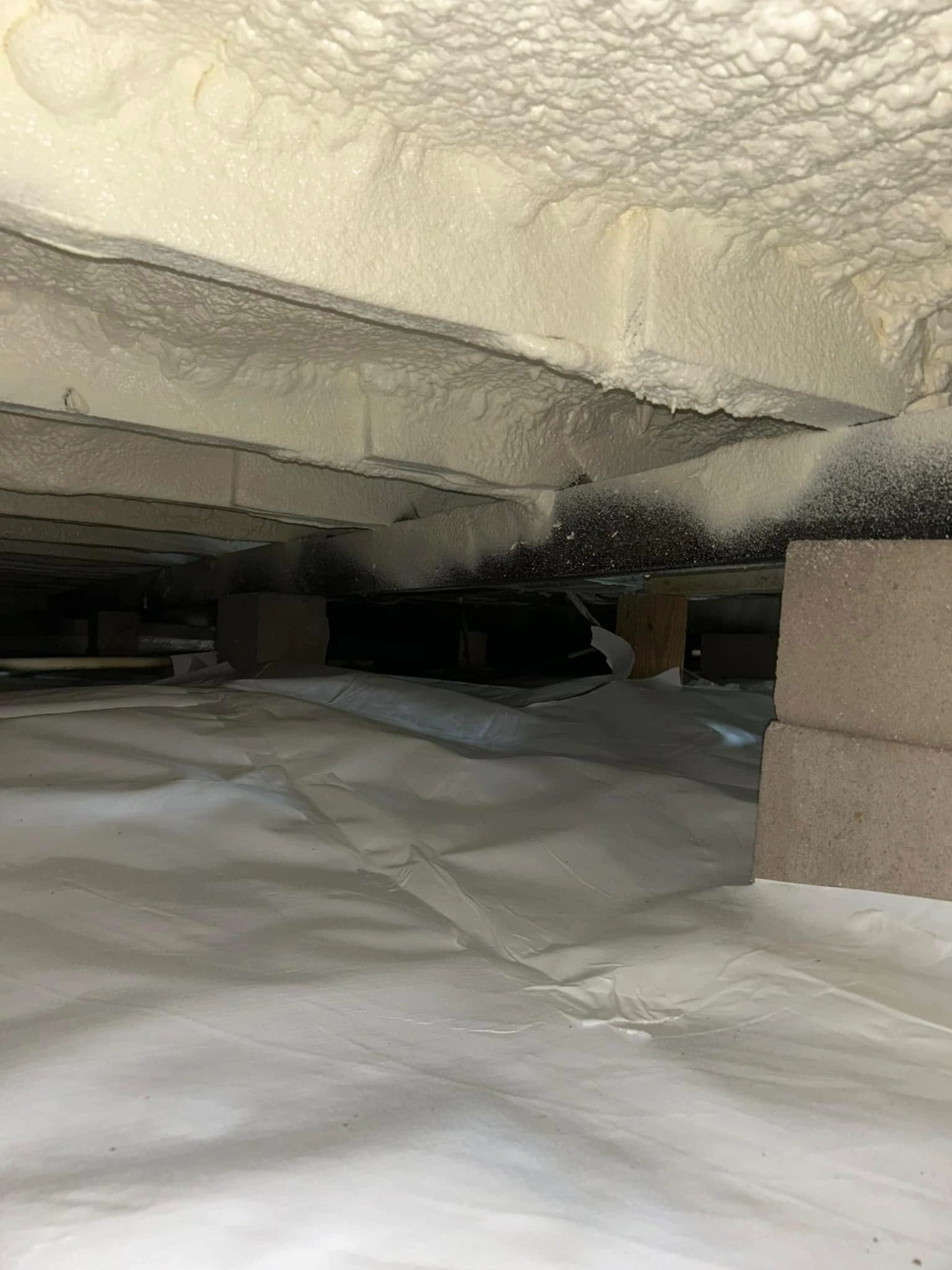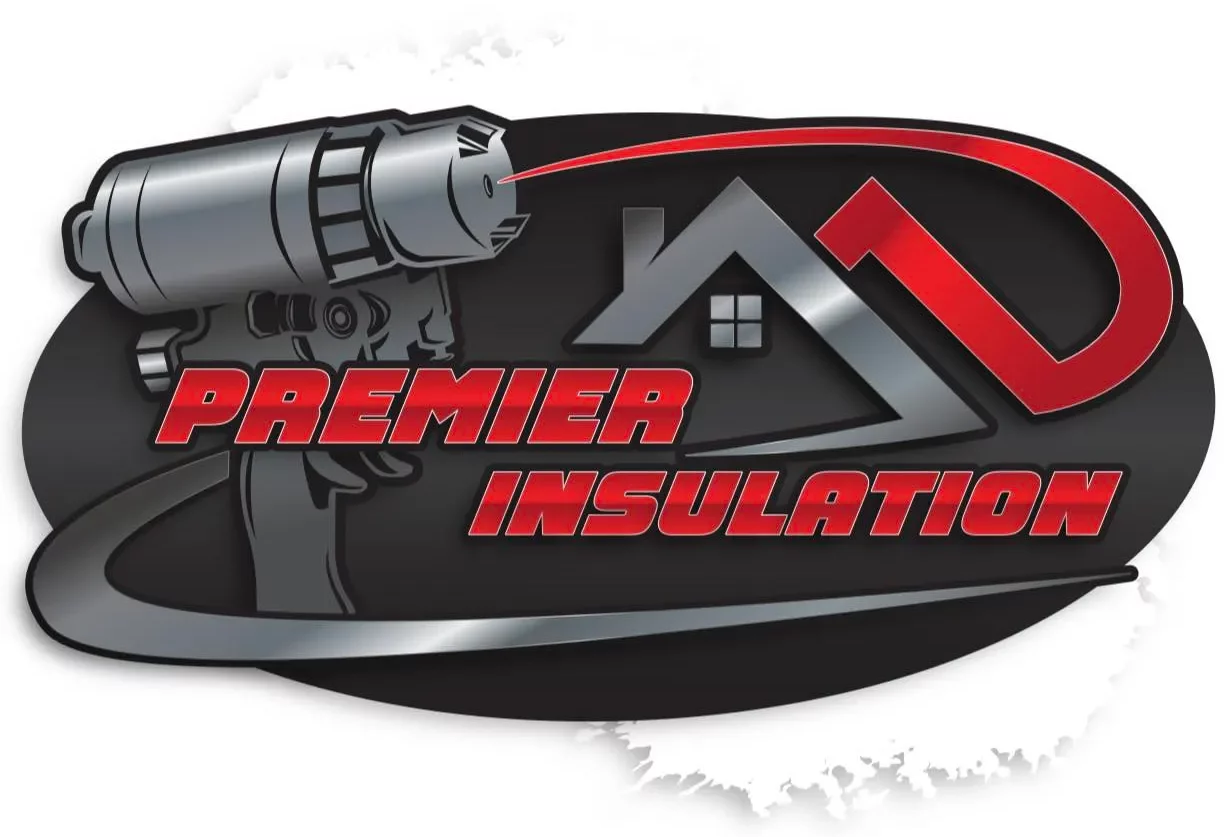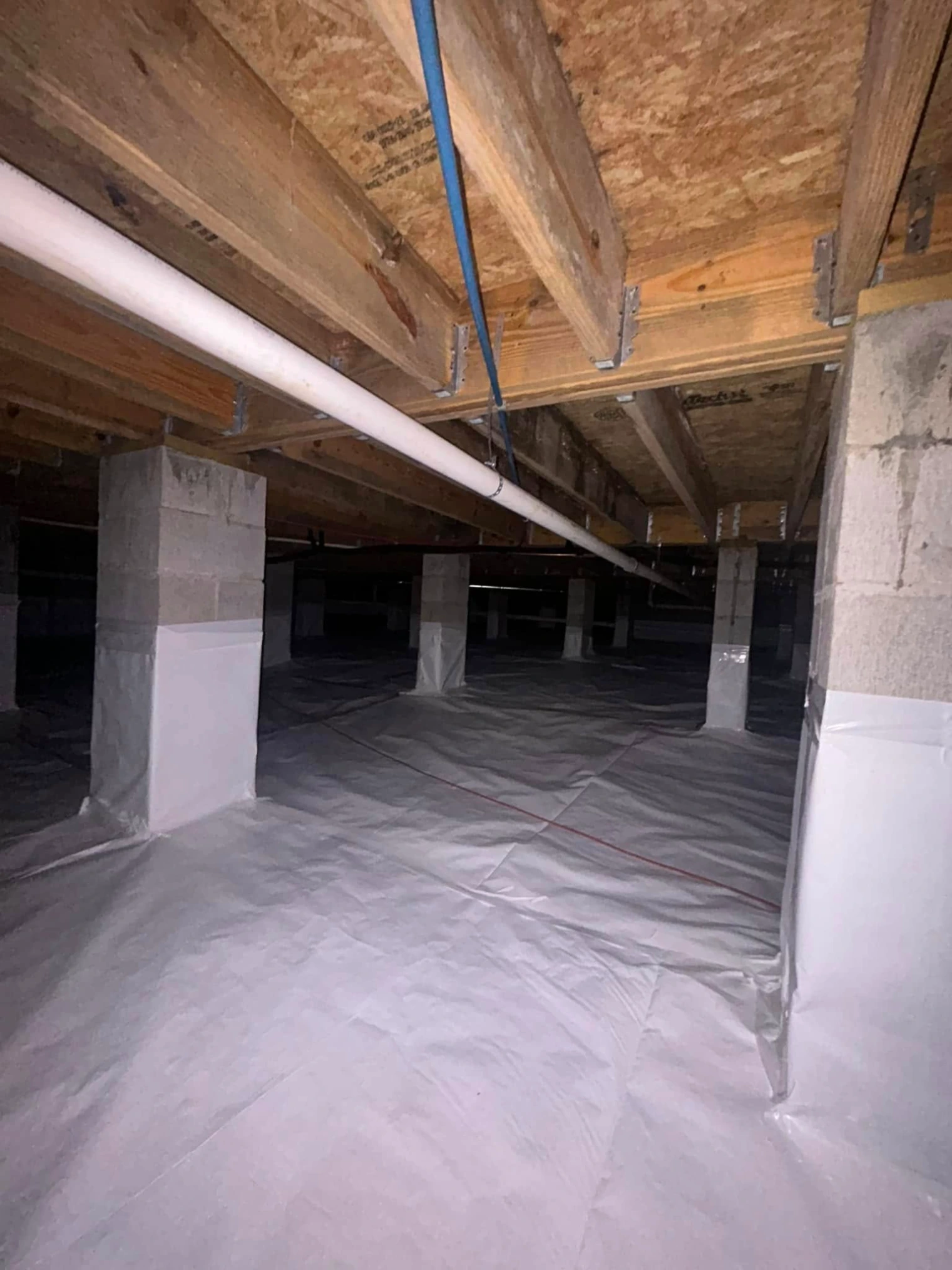The long-term benefits of crawl space encapsulation extend far beyond immediate moisture control, delivering measurable improvements in structural integrity, energy efficiency, and indoor air quality that compound over decades. Property owners experience reduced maintenance requirements, lower utility bills, extended equipment lifespans, and enhanced home values through comprehensive moisture management that prevents the cascading problems common in traditional vented crawl spaces.
These advantages become particularly significant over 15-20 year periods when encapsulated systems demonstrate their superior performance compared to conventional approaches. Professional installation creates controlled environments that maintain optimal conditions year-round, eliminating the seasonal fluctuations that cause structural damage, pest problems, and energy inefficiency in untreated spaces.
Structural Preservation Over Time
Long-term structural benefits represent the most significant advantage of crawl space encapsulation. Wood framing members maintain optimal moisture content below 19%, preventing rot, decay, and fungal growth that typically appears within 5-10 years in humid environments. This preservation extends the lifespan of floor joists, subfloor materials, and support beams by decades compared to traditional vented systems.
Foundation protection occurs through reduced hydrostatic pressure and improved moisture management around concrete and masonry surfaces. The controlled environment prevents freeze-thaw cycles that create cracks and deterioration over multiple seasons. Metal components including HVAC ductwork, plumbing, and electrical systems experience significantly reduced corrosion rates in the stable humidity environment.
According to the National Association of Home Builders, homes with proper moisture control systems show 40-60% less structural maintenance requirements over 20-year periods compared to properties with traditional vented crawl spaces.
Bonus Tip: Document structural conditions before encapsulation with photographs and humidity readings. This baseline helps track improvements and provides valuable information for insurance claims or property assessments years later.
Energy Efficiency Gains That Compound
Energy savings from crawl space encapsulation increase over time as HVAC systems operate more efficiently in stable conditions. Initial reductions of 15-20% in cooling costs typically improve further as systems avoid the strain of constant humidity removal and temperature regulation. Winter heating efficiency gains become more pronounced as floor temperatures stabilize and heat loss through flooring materials decreases.
The Department of Energy reports that properly encapsulated crawl spaces maintain their energy performance advantages for 20+ years when systems receive appropriate maintenance. This longevity contrasts sharply with traditional insulation methods that degrade over time due to moisture exposure and settling.
Long-Term Performance Metrics
| Benefit Category | 5-Year Impact | 10-Year Impact | 20-Year Impact |
| Energy Savings | 15-20% reduction | 20-25% reduction | 25-30% reduction |
| Structural Maintenance | 50% reduction | 60% reduction | 70% reduction |
| Equipment Lifespan | 20% extension | 30% extension | 40% extension |
| Indoor Air Quality | Immediate improvement | Sustained improvement | Optimal conditions |
| Property Value | 3-5% increase | 5-8% increase | 8-12% increase |
Indoor Air Quality Improvements
The controlled environment created by encapsulation delivers sustained indoor air quality benefits that become more valuable over time. Elimination of mold growth prevents the accumulation of allergens and respiratory irritants that typically worsen in untreated crawl spaces. The sealed system prevents soil gases, including radon, from entering living spaces through natural air movement patterns.
Pest control advantages compound over years as the inhospitable environment continues to deter insects, rodents, and other moisture-dependent organisms. This protection reduces the need for chemical treatments and prevents the structural damage associated with termite infestations and carpenter ant activity.
Research from the Environmental Protection Agency indicates that homes with comprehensive moisture control systems maintain indoor air quality standards that exceed baseline requirements by 40-60% over extended periods.
Equipment Longevity and Performance
HVAC systems installed in encapsulated crawl spaces demonstrate significantly extended operational lifespans due to reduced strain from humidity control and temperature regulation. Ductwork maintains integrity longer without the condensation issues that cause deterioration in traditional vented spaces. Electrical systems experience fewer moisture-related failures and corrosion problems.
Water heaters, service panels, and other mechanical equipment benefit from the stable environment that prevents the temperature fluctuations and humidity exposure common in untreated crawl spaces. This protection translates to reduced replacement frequencies and lower maintenance requirements over decades.
Bonus Tip: Maintain detailed service records for all equipment in encapsulated crawl spaces. Extended equipment lifespans provide documentation of system benefits that support property valuations and insurance assessments.
Property Value Enhancement
Real estate professionals report that homes with properly encapsulated crawl spaces command higher selling prices and experience shorter market times compared to properties with traditional systems. The perceived value increases over time as potential buyers recognize the long-term maintenance savings and energy efficiency benefits.
Appraisers increasingly factor moisture control systems into property valuations, particularly in humid climates where encapsulation addresses common structural concerns. The investment in encapsulation typically shows positive returns within 7-10 years through combined energy savings and increased property values.
Maintenance and System Reliability
Properly installed encapsulation systems require minimal maintenance compared to traditional crawl space approaches. Annual inspections ensure vapor barriers remain intact and dehumidification equipment operates efficiently. This predictable maintenance schedule contrasts favorably with the unpredictable repair requirements common in moisture-damaged crawl spaces.
System reliability improves over time as components settle into optimal operating patterns. Modern dehumidifiers designed for crawl space applications typically operate for 10-15 years with routine maintenance, while vapor barriers often carry warranties extending 15-20 years.
Climate-Specific Long-Term Advantages
Humid climates like those found in Georgia and the Southeast see the most dramatic long-term benefits from encapsulation. The persistent moisture challenges in these regions create accelerated deterioration in traditional systems, making the protective benefits of encapsulation more valuable over time.
Temperature extremes common in continental climates also benefit from the moderating effects of encapsulation. The thermal mass created by conditioned crawl spaces helps stabilize indoor temperatures and reduces the cycling frequency of HVAC systems.

Things to Consider for Maximum Long-Term Benefits
Several factors influence the long-term performance of encapsulation systems. Professional installation quality determines the initial effectiveness and longevity of vapor barriers, air sealing, and dehumidification components. Proper system sizing ensures adequate moisture control capacity for changing conditions over decades.
Maintenance scheduling affects system performance and component lifespans. Regular filter changes, annual inspections, and prompt attention to minor issues prevent the degradation that compromises long-term benefits. Property modifications such as landscaping changes or exterior drainage improvements can enhance system performance over time.
Local building codes and utility programs may offer additional incentives for moisture control improvements that enhance the financial benefits of encapsulation. Some utility companies provide rebates for systems that demonstrate measurable energy savings over extended periods.
Is the investment justified for older homes?
Older homes often benefit most from encapsulation due to existing moisture problems and inefficient traditional systems. The structural protection provided by encapsulation can prevent costly foundation repairs and framing replacement that commonly occur in aging properties with moisture issues.
How do benefits vary by geographic region?
Humid climates show the most dramatic long-term benefits, with energy savings and structural protection becoming more valuable over time. Arid regions still benefit from temperature stabilization and improved indoor air quality, though moisture control advantages are less pronounced.
What happens if the system requires repairs?
Individual components can be repaired or replaced without compromising the entire system. Vapor barriers typically require minimal maintenance, while dehumidifiers may need replacement every 10-15 years depending on usage and environmental conditions.
Professional Installation for Optimal Results
Premier Insulation provides comprehensive encapsulation services designed to maximize long-term benefits through proper system design and installation:
- Crawl Space Encapsulation: Complete moisture control systems with vapor barriers, dehumidification, and air sealing engineered for decades of reliable performance and sustained benefits.
- Dehumidifier Installation: Properly sized humidity control systems with maintenance programs designed to ensure optimal performance and extended equipment lifespans.
- Air Sealing Services: Comprehensive infiltration control that prevents the air movement patterns that compromise long-term system effectiveness and energy efficiency.
- Insulation Solutions: Coordinated thermal barriers that work with encapsulation systems to maximize energy savings and comfort improvements over extended periods.
Maximizing Your Investment Returns
The long-term benefits of crawl space encapsulation justify the initial investment through sustained energy savings, reduced maintenance requirements, and enhanced property values. Success depends on proper system design, professional installation, and consistent maintenance that preserves system integrity over decades.
Property owners who prioritize long-term performance and value retention find encapsulation delivers measurable returns that compound over time. The investment typically pays for itself through combined energy savings and avoided repair costs within the first decade of operation.
Get Professional Assessment and Planning
Determining the optimal encapsulation approach for long-term benefits requires professional evaluation of existing conditions, climate factors, and property-specific considerations. Premier Insulation provides comprehensive assessments that identify the most effective systems for sustained performance and maximum return on investment.
Contact Premier Insulation at (229) 554-3939 or premiereinsulationga@gmail.com to schedule a detailed evaluation. Professional planning ensures encapsulation systems deliver optimal long-term benefits that protect your property investment and enhance living comfort for decades.
Understanding Long-Term Performance
How long do encapsulation systems typically last?
Properly installed encapsulation systems maintain effectiveness for 20-30 years with routine maintenance. Vapor barriers often carry warranties of 15-20 years, while dehumidifiers typically require replacement every 10-15 years. The overall system continues delivering benefits throughout this period with minimal degradation.
What maintenance extends system lifespan?
Annual inspections identify minor issues before they affect system performance. Dehumidifier filter changes every 3-6 months maintain optimal operation. Prompt attention to vapor barrier damage from settling or pests prevents moisture intrusion that compromises long-term benefits.
Do energy savings increase over time?
Energy savings often increase as HVAC systems operate more efficiently in stable conditions and avoid the degradation common in moisture-exposed environments. Initial savings of 15-20% typically improve to 25-30% over 20-year periods as equipment maintains peak performance longer.
How does encapsulation affect home resale value?
Real estate professionals report that encapsulated crawl spaces add 3-5% to home values initially, with increases reaching 8-12% over 20-year periods as the benefits become more apparent. Properties with documented energy savings and maintenance records command higher prices and sell faster than comparable homes without moisture control systems.
What factors can reduce long-term benefits?
Poor installation quality, inadequate maintenance, and system component failures can compromise long-term performance. External factors such as drainage problems, plumbing leaks, or structural settling may require attention to maintain optimal system effectiveness over extended periods.


